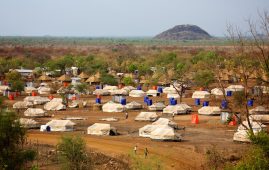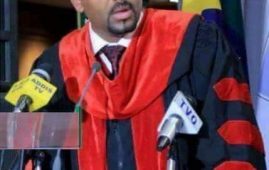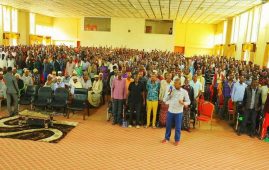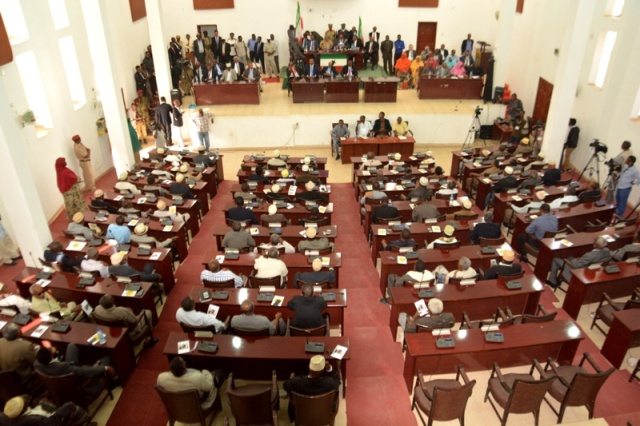It’s been a few days since EPRDF’s massive win in the election 2010 has become evident and analysts are struggling to come up with a theory explaining the outcome. Granted that, the 2005 elections will serve as a point of departure for most.
Thus, I made a brief research to compare the two elections’ important features, though not exhaustive. The findings are presented here under eleven headings.
I. ALLEGATIONS OF POLITICAL KILLINGS
In 2005
The number of politically motivated killings alleged by the opposition parties were eight until the May 15/2005 polling day.
In 2010
The opposition made only three allegations of killings until the May 23/2010 polling day.
II. NUMBER OF CANDIDATES
In 2005
Only 35 parties contested by fielding 1343 candidates for the House of Peoples’ Representatives (HPR) and 1902 candidates for the Regional Councils.
In 2010
There were 63 parties with 1627 candidates for the HPR and 2625 candidates for Regional Councils. That is an increase of about 15% and 19%, respectively.
III. THE BOARD MEMBERS
In 2005
The government resisted calls by the opposition for changing the nine-member Board that heads the National Election Board of Ethiopia (NEBE), defending their neutrality by citing the Chairman of the Board is the President of the Federal Supreme Court.
In 2010
The parliament appointed the Chair and other members of the Board anew in 2008. The Prime Minister decided not to exercise his Constitutional mandate to nominate whosoever he deems fit. Thus, he picked nominees from the list of individuals who were vetted for neutrality and competence by all parties, including Prof. Beyene, Dr. Merera Gudina, Ato Lidetu Ayalew parties. And, a new head was appointed for NEBE Secretariat.
IV. SACKING ELECTION OFFICERS
IN 2005
Oppositions’ request for a complete reshuffling of the election officers at all levels was denied, save at limited scale, since the government saw it as letting their acquired experience go to waste.
IN 2010
NEBE sacked about 75 %( over 150,000) of the election officers at all levels. Countless inquiries were held, ’til the last month of the election campaign, whenever the opposition made allegations on the neutrality of the election officers. In fact, the opposition wishes to see no government employee working as an election officer at any level, though they couldn’t make this demand officially for fear of political backlash.
V. JCPPs
In 2005
Disputes among political parties were handled only by the election board and by the courts. It was only after the June 8/’05 street violence, which left 36 dead, that parties signed an agreement for joint dispute resolution.
board and by the courts. It was only after the June 8/’05 street violence, which left 36 dead, that parties signed an agreement for joint dispute resolution.
In 2010
Joint Councils of Political Parties (JCPP) had been set at national, regional, and zonal levels, well in advance, to investigate and decide on complaints submitted by parties, though political parties may take their case directly to NEBE or the courts if they wish to. So far, the only serious criticism made by the opposition is that the councils take much time deliberating, since decisions are taken by consensus.
VI. EU OBSERVERS
In 2005
The European Union sent 160 observers headed by a Portugese Member of the European Parliament, Mrs. Ana Gomez.
In 2010
The EU fielded 170 observers headed by a Dutch member of the European Parliament, Mr. Thijs Berman.
VII. OBSERVATION BY CIVIL SOCIETY
In 2005
Coalition of Civil Societies (associations & NGOs) ability to observe the election was curtailed, because the NEBE denied it permission. The Federal Supreme Court ruled allowing them to observe, but they were able to field only about 1,200 observers in Addis Ababa and its surroundings due to time constraint.
In 2010
The Coalition of Civil Societies fielded about 40,000 observers all over the country.
VIII. TELEVISED DEBATES
In 2005
There were six televised debates, of which CUD (KINIJIT) participated in five of them.
in five of them.
In 2010
There were nine televised debates. Though they were not broadcasted live, to avoid hate speeches, there were editing only in two occasions conducted upon the decision of the Joint Council of Political Parties.
IX. MEDIA ACCESS
In 2005
Political parties conducted election campaign for several weeks on the free media time allotted, on the public television, radio and newspapers. (I couldn’t get the exact figures, yet)
In 2010
Free media time of 90.17 television hours, 495 radio hours, and 849 newspaper columns were allotted for political parties to use for 12 weeks of election campaign.
Alas, the parties used only about half their free media time. The parties used only 61% the free TV air time, 51% of the radio hours, and 40% of the newspaper columns, according to the Ethiopian Broadcasting Authority.
X. OPPOSITION FINANCE
In 2005,
The total cost of CUD (KINIJIT) election campaign, including voluntary service of its supporters, was estimated to be less than 2 million Birr, as Dr. Berhanu Nega estimated in his book. (Many doubt this figure though, since KINIJIT leaders publicly accused one another for the embezzlement of one million US dollar from the party account, shortly after their release on pardon in 2007)
In 2010,
NEBE reported to have disbursed over 13million Birr. Apart from this, the opposition parties had about 7.5 million Birr, according to Eskinder Nega’s estimations. (Note that Eskinder Nega was owner of now-defunct three newspapers, including Menelik, and he doubles as a v/Chairman of All Amhara People Organization.)
XI. RE-WRITING THE LAWS
In 2005
Only partial amendments where made on the election law following a negotiation between EPRDF and UEDF-Union Ethiopian Democratic Forces(aka ‘Hibret’, in Amharic).
There were no detailed rules governing all election campaigning, except the general provisions found in the Constitution, the election law, the criminal code and the like. EPRDF had issued a code of conduct for it members and supporters. However, the opposition complained the code had no much force, while EPRDF complained its members were the only ones tied by such a code.
In 2010
The election law is written anew upon lengthy negotiations among the parties, which agreed on most save some minor provisions.
There was a universal code of conduct enacted by the parliament as a law. The code was first proposed by western diplomats, then detailed and agreed unanimously by about 60 parties except MEDREK- the coalition of 6 parties. (MEDREK leaders repeatedly stated they have no objections on the contents of the code of conduct)
| Highlights | Election ’05 | Election ’10 |
| Allegations of death | 8 | 3 |
| Televised debates | 6 | 9 |
| No. of EU observers | 160 | 170 |
| No. of Civil Societies Observers | about 1,200 | 40,000 |
| Election officers | same as 2000 | about 75% new |
| No. of parties | 35 | 63 |
| Opposition candidates for HPR | 1343 | 1627 |
| Opposition candidates for Regional Councils | 1902 | 2625 |



![Photo - Muse Bihi, Ahmed Silanyo and Dahir Riyale, the new president and his predecessors [Photo - Muse Jeeh]](https://hornaffairs.com/wana/wp-content/uploads/2017/12/Photo-Muse-Bihi-Ahmed-Silanyo-and-Dahir-Riyale-the-new-president-and-his-predecessors-Photo-Muse-Jeeh-269x170.jpg)
